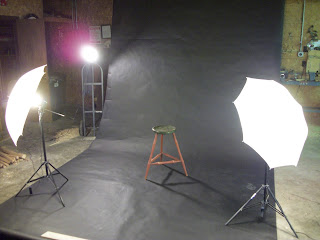I have always liked the look of painted antiques and how the paint seems worn (battered in some cases) and all the patina that naturally comes with age. Some of the patina is difficult to emulate, while other aspects are fairly easy. One such way to help make a new piece have the aged and more authentic look is to use rusty hardware (hinges, screws, square nails, etc). You can buy this look already done but it's expensive. I have been doing the rusting process myself for several years and it's relatively easy and much cheaper, while not entirely safe if you don't take some precautions.
First you have to get all steel nails, screws, hinges or whatever you plan to rust. I purchased 200 #8 x 1" slotted screws for this demo and they cost me $12 in bulk. They come with a zinc coating on them all bright, shiny and new. To get them to where I want them, all rusty and grungy looking, I began with a dip in a bath of muratic acid, the kind used for swimming pools. I get mine at the big box store. It's diluted quite a bit and works good for this process although a respirator and doing this outside is a must (shop tools and their steel surfaces will rust as well just from the fumes in the air). The fumes from the acid is very unpleasant to breathe. After I have the respirator on and I'm in the grass outside away from any concrete (muratic acid will eat concrete) I pour the acid into either a plastic or glass jar till it just covers the screws etc. You'll see a yellowish bubbling froth start to appear. After a few seconds the froth dies back down and has eaten all the plating that is put on the screws. It gives a dull grey appearance.
Next I pour the acid back into the jug it came in (it can be used over and over) and pour in plain water into another plastic or glass jar. Dump the screws into the water, let them set for a few minutes then simply pour out the water and place the screws on a shop rag and let them air dry. It usually takes 24 hours for them to be ready to use. If it doesn't get enough rust the first go around I squirt more water on them and let it set again and completely dry. It's rare that I have to do it more than twice. Then once dry, they look like the aged, old screws almost every antique has. If it was this easy to get the aged patina on wood, my job would be simple.


















